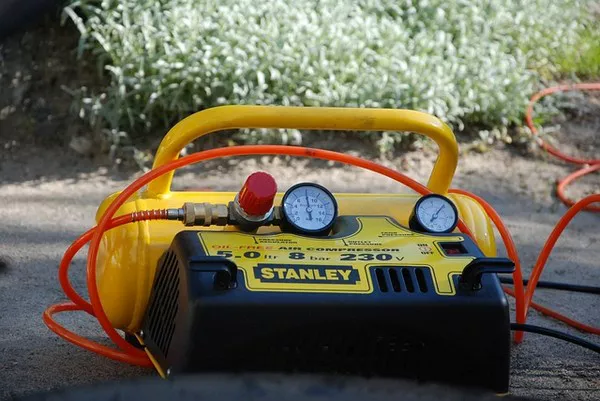In the world of HVAC (Heating, Ventilation, and Air Conditioning), the efficient and reliable operation of compressors is paramount to maintaining optimal indoor comfort. Compressors are the heart of air conditioning and refrigeration systems, responsible for circulating refrigerant and facilitating the heat exchange process. As HVAC technology advances, various accessories and components are introduced to enhance system performance. One such component is the hard start kit, designed to assist compressors during their startup phase. While hard start kits can provide benefits, it’s essential to delve into whether they can potentially cause damage to compressors.
Understanding Hard Start Kits
A hard start kit, also known as a start capacitor or start assist device, is an accessory added to an HVAC system to aid in the startup process of a compressor. Compressors require a significant amount of energy to overcome the initial inertia and begin operation. This initial surge of energy requirement can put stress on electrical components and, in some cases, may lead to startup failures.
Hard start kits consist of a start capacitor and a potential relay. The capacitor stores electrical energy and releases it rapidly when needed, providing an additional boost of power during startup. The potential relay monitors the current flowing through the system and determines when to engage and disengage the start capacitor. By doing so, the hard start kit aims to reduce the strain on the compressor’s electrical components during startup.
The Benefits of Hard Start Kits
When applied appropriately, hard start kits can offer several advantages to HVAC systems:
Improved Startup Reliability: One of the primary benefits of a hard start kit is its ability to improve the startup reliability of compressors, particularly in situations where there is low voltage or inadequate power supply.
Reduced Energy Consumption: By minimizing the strain on the compressor during startup, hard start kits can contribute to reduced energy consumption. This energy-saving potential is particularly beneficial in areas with frequent power fluctuations.
Extended Compressor Lifespan: A smoother startup process can potentially lead to a longer compressor lifespan. The reduction in wear and tear during startup can result in less stress on the compressor’s mechanical components.
Enhanced System Performance: HVAC systems equipped with hard start kits may experience improved cooling efficiency and faster cooling times, resulting in increased customer satisfaction.
Potential Risks and Considerations
While the benefits of hard start kits are evident, it’s crucial to examine the potential risks and considerations associated with their use:
Compatibility: Not all HVAC systems require hard start kits. In fact, modern compressors are designed to handle startup demands without external assistance. Incorrectly installing a hard start kit on a system that doesn’t need it can lead to unnecessary stress on the compressor and other electrical components.
Overuse: Excessive use of hard start kits can lead to over-dependence on them. If the underlying issues causing startup problems are not addressed, relying solely on a hard start kit can mask these issues and delay necessary repairs.
Incorrect Installation: Improper installation of a hard start kit can result in electrical malfunctions, short circuits, or even compressor damage. It’s essential to have a trained HVAC technician install the kit following manufacturer guidelines.
Warranty Concerns: The installation of a hard start kit might void the warranty of certain HVAC systems. HVAC manufacturers often have specific guidelines about aftermarket components, and failure to comply with these guidelines could lead to warranty-related issues.
Can Hard Start Kits Damage Compressors?
The question of whether hard start kits can damage compressors is a subject of debate within the HVAC community. Some experts argue that if installed and used correctly, hard start kits should not cause compressor damage. However, there are potential scenarios where damage could occur:
Incompatibility: As mentioned earlier, installing a hard start kit on a system that doesn’t require it can lead to unnecessary stress on the compressor. This stress could potentially contribute to premature compressor failure.
Overloading: In rare cases, a hard start kit that delivers too much additional power during startup might overwhelm the compressor’s electrical components, leading to overheating or electrical failure.
Neglected Repairs: Relying solely on a hard start kit to address startup issues without addressing underlying problems, such as damaged wiring or faulty capacitors, can exacerbate the situation and potentially lead to compressor damage.
Conclusion
In the ever-evolving landscape of HVAC technology, hard start kits have emerged as a tool to enhance the startup process of compressors. While they offer advantages such as improved reliability, energy savings, and potentially extended compressor lifespan, it’s essential to approach their installation and use with caution.
The potential for damage to compressors through the misuse or overuse of hard start kits underscores the importance of professional installation and adherence to manufacturer guidelines. HVAC technicians and system operators should carefully assess whether a hard start kit is necessary for a particular system, considering factors such as system age, design, and startup characteristics.
Ultimately, the decision to use a hard start kit should be made after thorough consideration of the system’s requirements and potential benefits. When integrated thoughtfully and appropriately, hard start kits can contribute positively to HVAC system performance without compromising compressor health. As with any HVAC accessory, vigilance, and expert consultation are key to ensuring the longevity and efficiency of the entire system.

